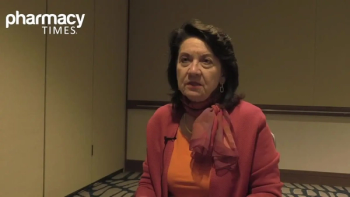
Beating Brain Cancer With the Help of a Village and Giving Back
Patient retraces her treatment journey from diagnosis through treatment for glioblastoma.
I am a doctor of educational leadership, a media specialist, a real estate broker, an entrepreneur, a community volunteer, a yoga enthusiast, a wife, mother of 3, sister, daughter, aunt, cousin, and friend. I’m also a 2-time brain cancer survivor, but I refuse to allow setbacks to stop me from pursuing my passions and goals.
In 2019, a brain tumor stopped me in my tracks, at least temporarily. The months leading up to my diagnosis were wrought with adversity. In early 2019, my dad, the gentlest, most kind- hearted, loving, and generous man, had a stroke at his jewelry store and passed away shortly thereafter.
A couple of months later, my mother was diagnosed with endometrial cancer and started to undergo treatment. Shortly thereafter, I started to experience migraines and brushed them off as being stress-induced with it being the end of the school year. I continued to go to work but the headaches grew progressively worse.
After a week or so, the pain and nausea had gotten so severe that I asked a colleague and friend, Carol,if she could cover part of my work for that afternoon. She instinctively knew something was wrong and rushed to check on me, then drove me home and alerted my family.
My husband, Rick, then arrived home to find me curled up on the bathroom floor. He called an ambulance, and I was rushed to our local hospital.
News spread quickly and many close friends and family members rushed up to be with me, although I was unresponsive. Our family is fortunate in that my cousin, Becky, who is like a sister to me, is also a brilliant palliative physician. She would soon save my life.
The attending physician at our local hospital explained that they consistently see patients in the emergency department who are feigning migraines to obtain painkillers. He tried to send me home with migraine medication without performing a CT scan.
Becky pushed back hard, telling the health care providers that I was not a complainer and that my “out of it” status signaled a serious condition. Because Becky was a respected physician, they couldn’t dismiss her as easily as “just” a family member.
Becky was convinced that I needed a CT scan, and her insistence persuaded a nurse to speak to the attending physician, who ultimately agreed to administer the scan. By then, I was unconscious, and the scan revealed a tumor and swelling from the pressure.
The physicians there weren’t sure which type of brain tumor it was, but my family didn’t wait to find out at that local hospital. My family insisted they transfer me to Henry Ford Hospital in Detroit, about an hour away.
I, of course, had no awareness of any of these developments. By the time I regained consciousness and opened my eyes the next day, I found myself at Henry Ford Hospital with my husband by my side and surrounded by health care professionals. Unbeknownst to me, countless family members and friends had already passed through to visit and find out what was going on.
I had a glioblastoma and needed surgery, but first I needed to be on steroids for approximately 7 days to reduce the swelling. The swelling was so severe that the doctors feared I would have a stroke. Waking up totally lucid was nothing short of a miracle, and then we soldiered on.
All the hospital staff—the nurses, physicians, nursing assistants, technicians, administrators, custodians—became extended family. I knew that I was in the best possible hands, and strangely was not afraid.
As I got closer to surgery, I had a conversation with my care team about how it would go. They said they had recently started using an optical imaging agent called Gleolan, which would fluoresce my tumor a bright pink hue, thereby enabling them to resect as much as possible. They described the new imaging agent as making the difference between doing brain surgery in the dark or with the lights on, and I said, ”Sign me up!”
My surgeon, Dr. Adam Robin, performed an awake craniotomy and, with the help of the imaging agent, was able to resect all of the tumor as well as a residual margin around it. I was fortunate because my tumor was at the top-front portion of my brain. I had to stay in a dark room for a couple of days because of photosensitivity with the imaging agent, and then I went home and back to my life. I did the usual course of radiation and chemotherapy, but was able to return to living my life and went back to work when the school year resumed.
Everything was surprisingly normal for the next 3 years. I worked, traveled, continued to practice yoga, spent a lot of time with my family, and even helped to open a second ice cream parlor after we acquired Ziggy’s Ice Cream just before my first diagnosis. My mission became patient advocacy and fundraising for the brain cancer community.
In 2020, my family hosted our inaugural
Each year, my team of physicians come on-site as celebrity scoopers to serve ice cream to our community. In 2022, we added a
When the migraines returned in the fall of 2022, I was in deep denial. I pushed them aside, wanting my life to continue as normal. I was scheduled for a routine MRI in August.
The MRI confirmed that the cancer had returned. Once again, I was more frustrated than scared, as this was the beginning of the school year and I didn’t want to take time off from work and be absent from my kids.
This time around, my surgery was planned in the most routine manner. I was already close with my Henry Ford care team, so I was permitted to go into surgery as an outpatient. This time, however, I was to undergo surgery at a different campus, where they had not yet used the
Once again, my care team asked whether I wanted them to use it, and that was a no-brainer (no pun intended). So, the hospital trained the health care staff on the use of this important tool, and I became the first patient at that location to benefit from it.
I was in the home stretch of finishing my PhD when the tumor returned. And because no one could predict the outcome of the surgery and any deficits I might suffer, I worked with my dissertation chair, Dr. Julia Smith, to seek permission to defend my PhD dissertation virtually, the day prior to my second surgery.
My fear was that my cognition would impair my performance if I waited until after the surgery, so delaying my dissertation defense simply wasn’t an option. I was not about to let a little brain tumor stand in the way of obtaining my doctorate.
As this was my second surgery and the tumor was in the same spot, I did not do radiation. I could have gone back on the same chemotherapy, which worked well after the first surgery, but my neuro-oncologist asked whether I was interested in being part of an early clinical trial for a different type of chemotherapy, and I quickly agreed. I was thrilled to try something new that could possibly help me, but more importantly, to help other people with glioblastoma in the future.
I know I am fortunate. I have well surpassed the life expectancy of a person with glioblastoma, and have accomplished so much in between and following two brain surgeries and other treatments. In hindsight, the initial diagnosis felt like the fight of my life.
I didn’t think of it that way, but that’s how I see it now. I am very lucky to be surrounded by a very loving community, and I would not be alive now without their ongoing support. I want others to be given this same opportunity, so this fall I’m going to retire from my school district position and use my lifelong love of education to advocate for others dealing with cancer, especially glioblastoma.
We don’t have a choice when we receive a devastating diagnosis, but we do have a choice in how we respond to it and to try and live as full a life as possible. Get out of your own way, live your life, do your thing. I hope to help others adopt and practice this mantra.
Newsletter
Stay informed on drug updates, treatment guidelines, and pharmacy practice trends—subscribe to Pharmacy Times for weekly clinical insights.


















































































































































































































